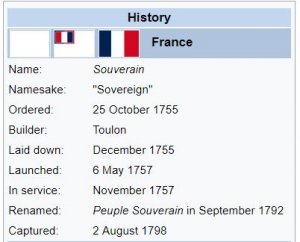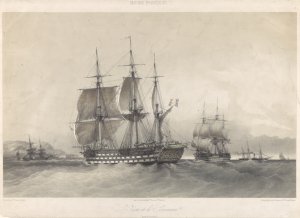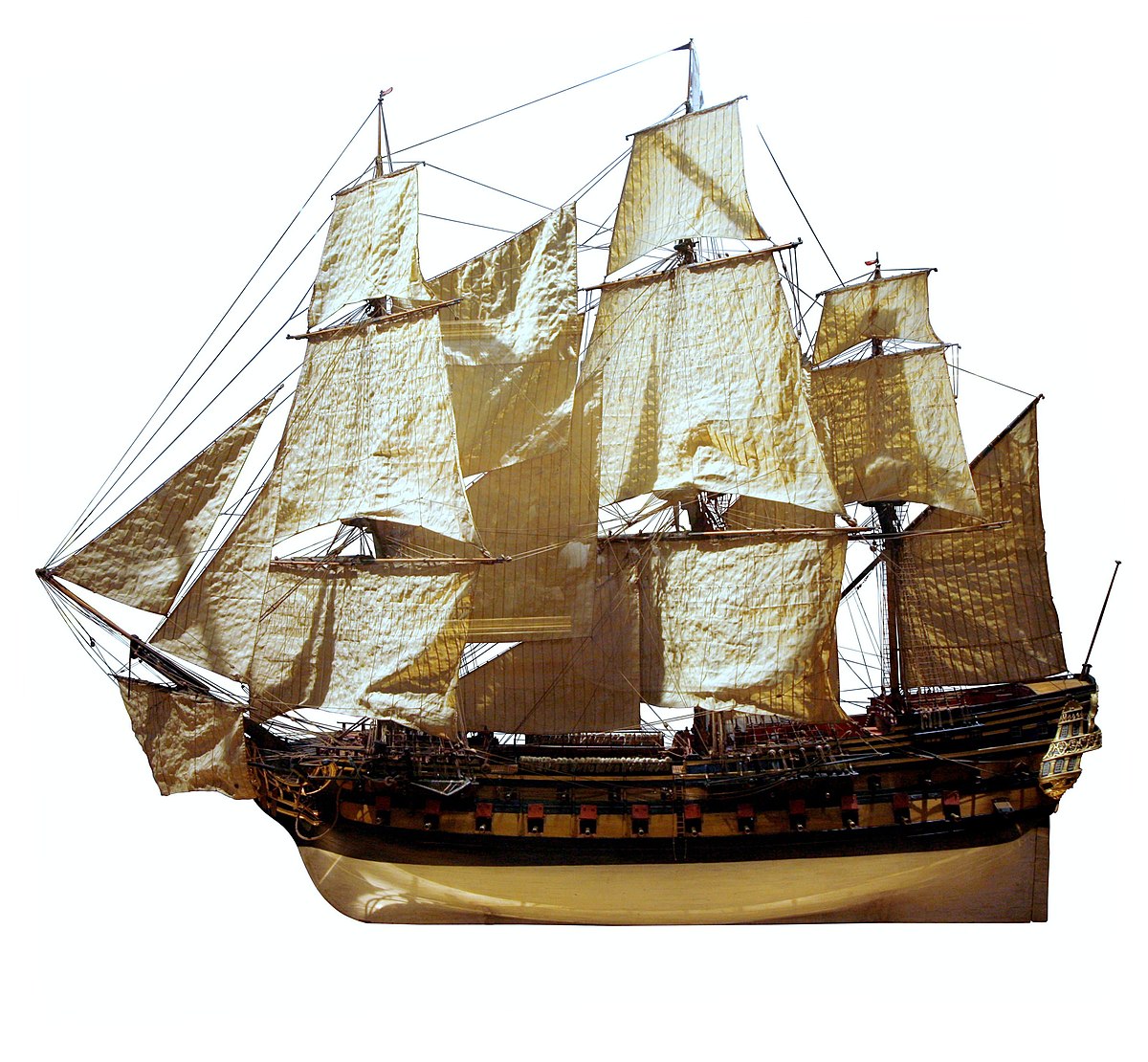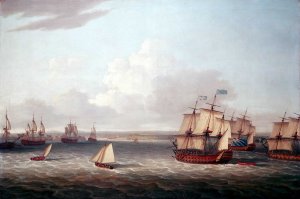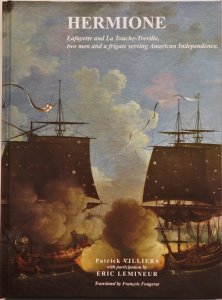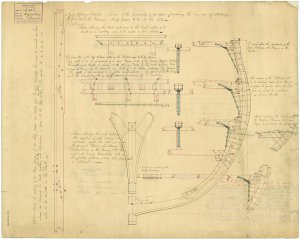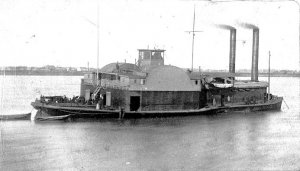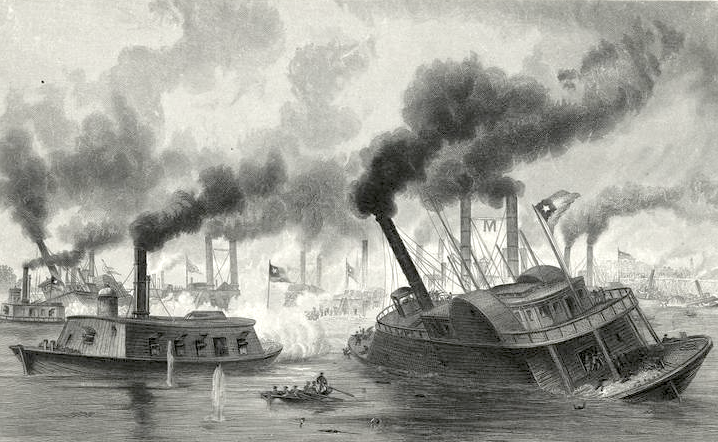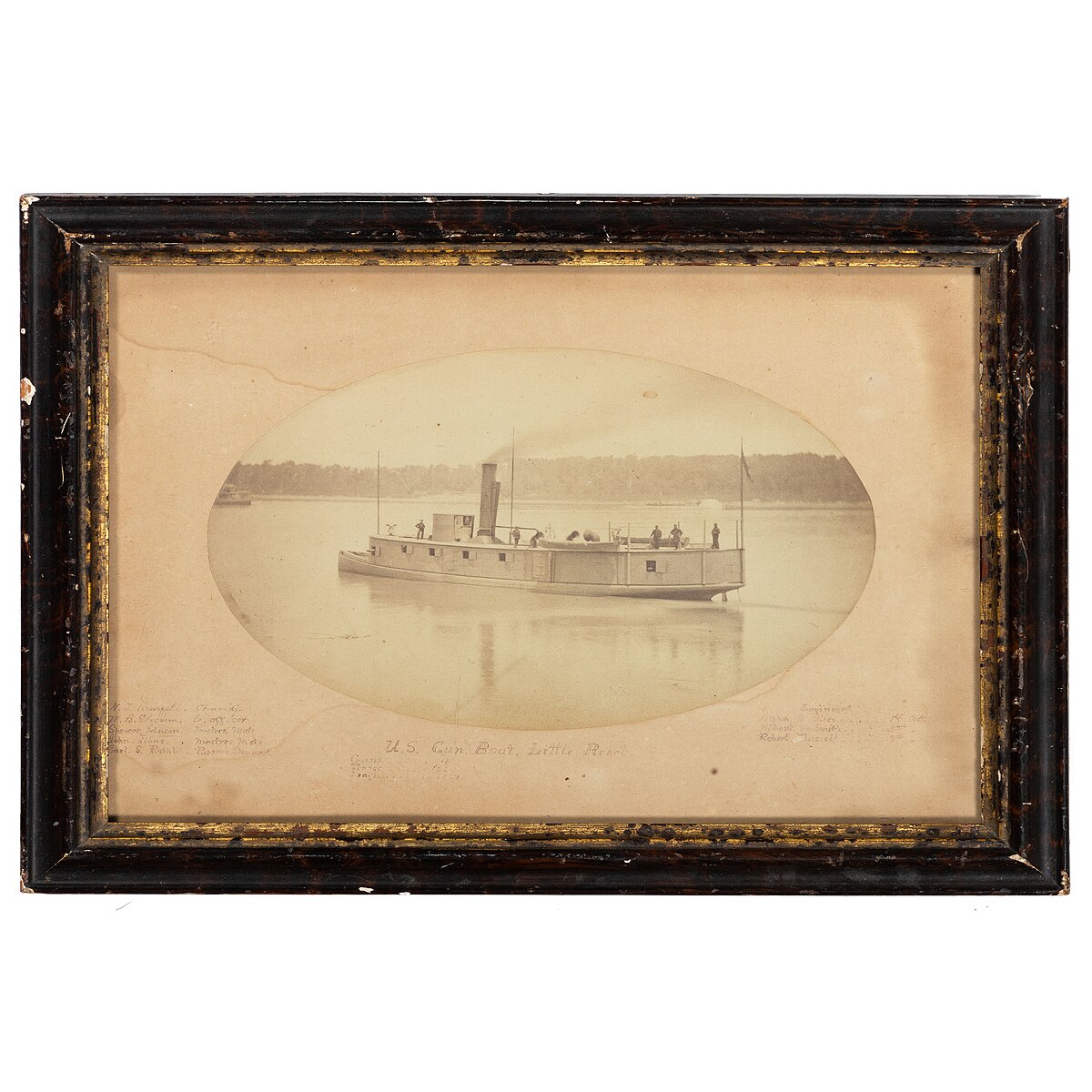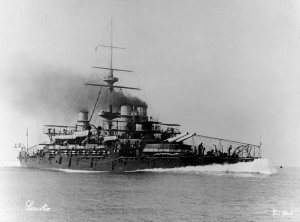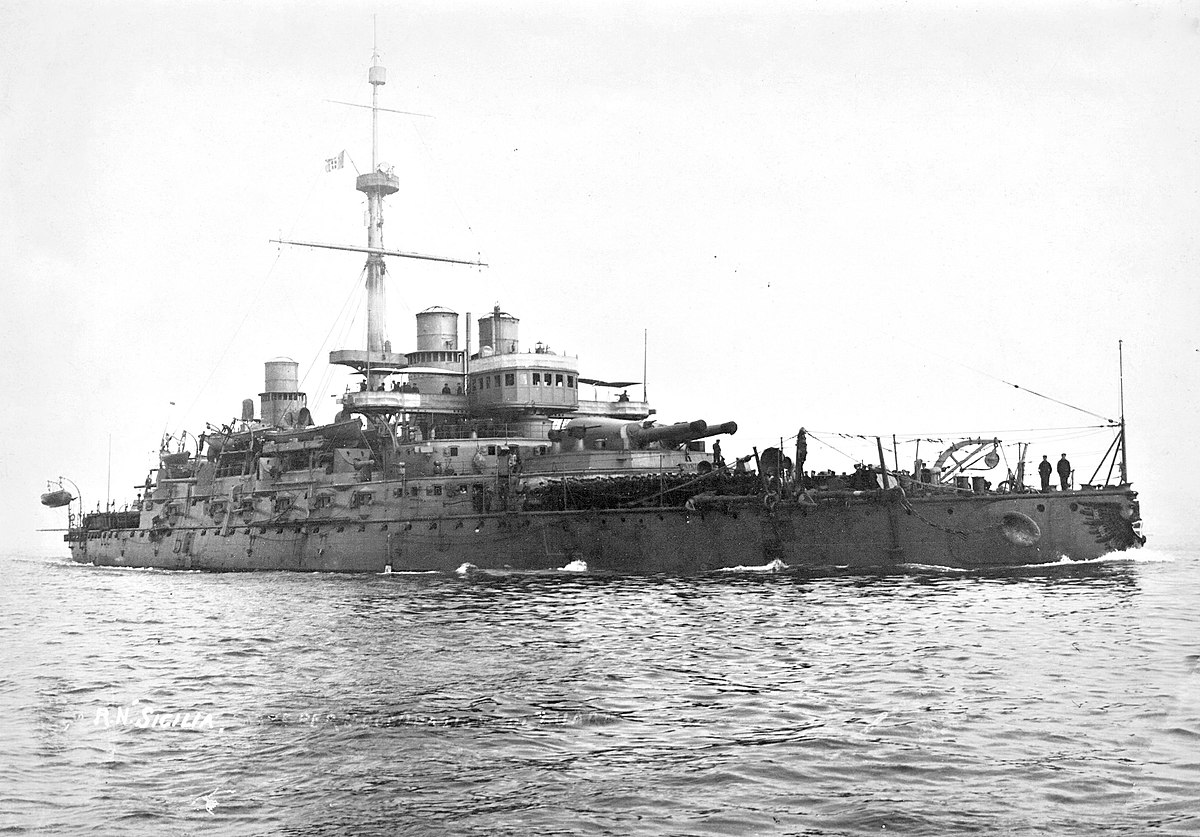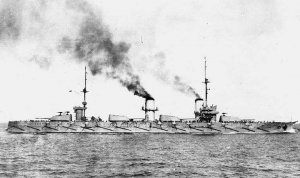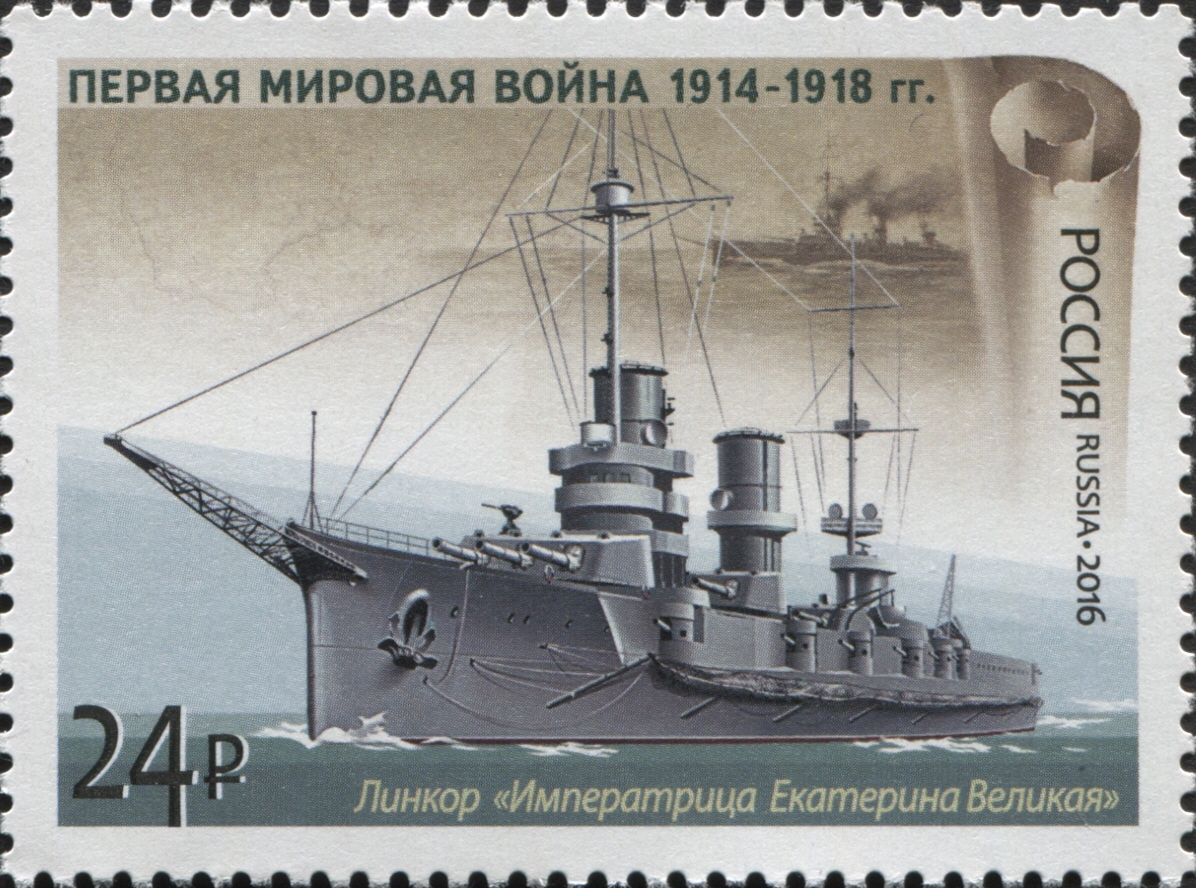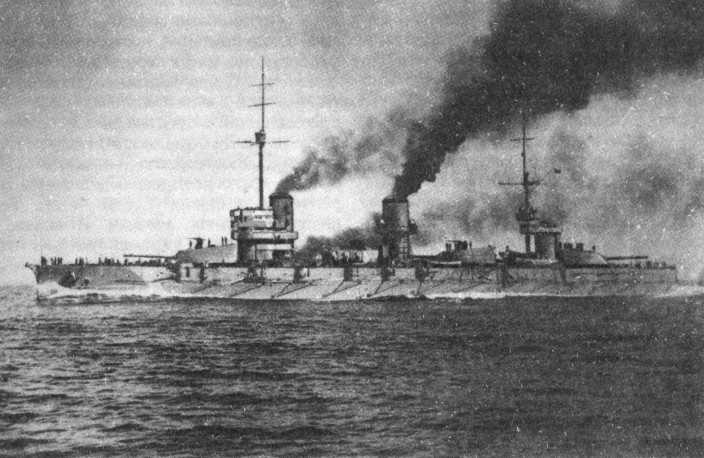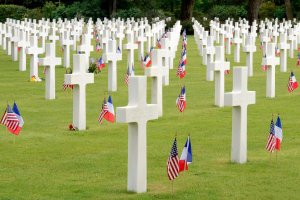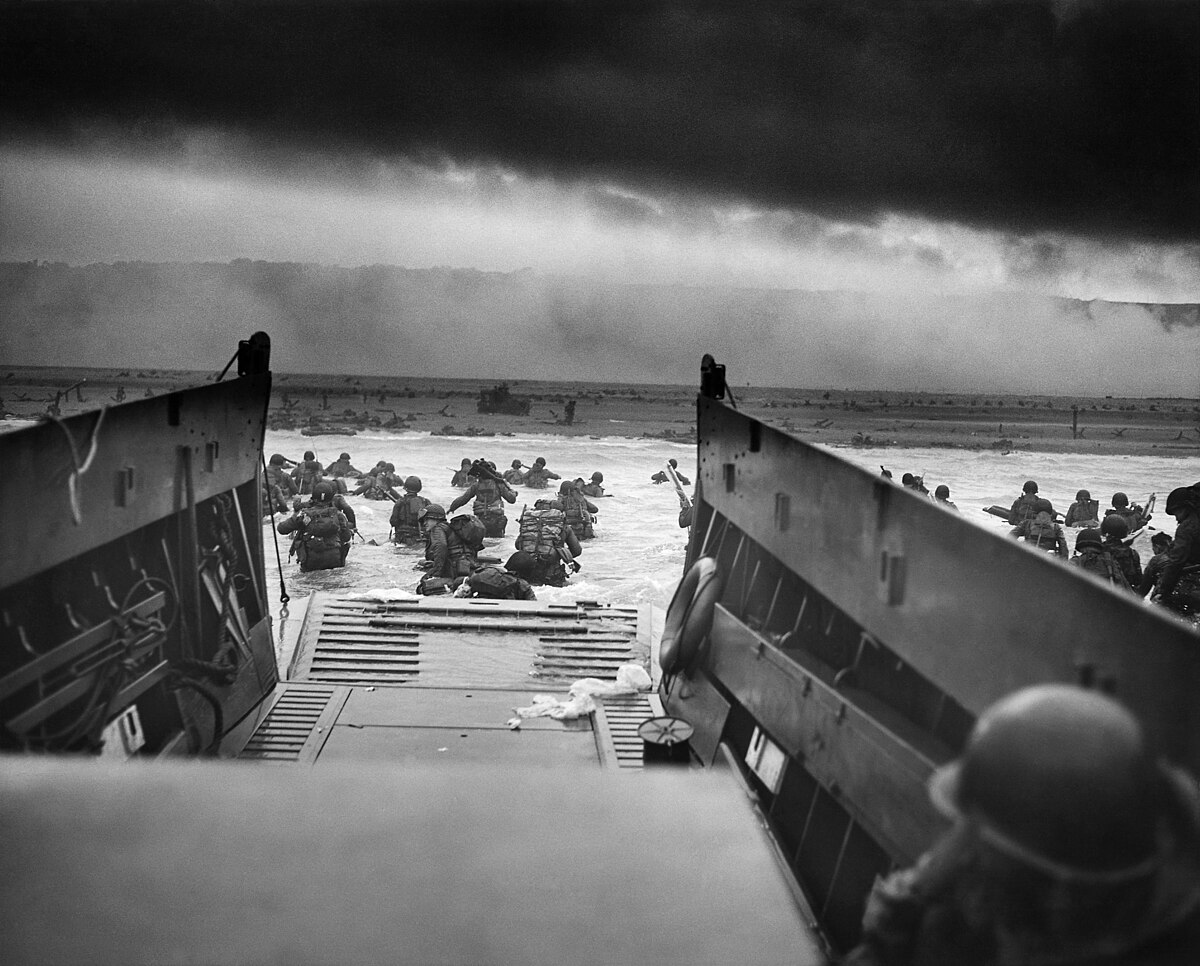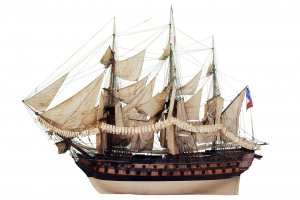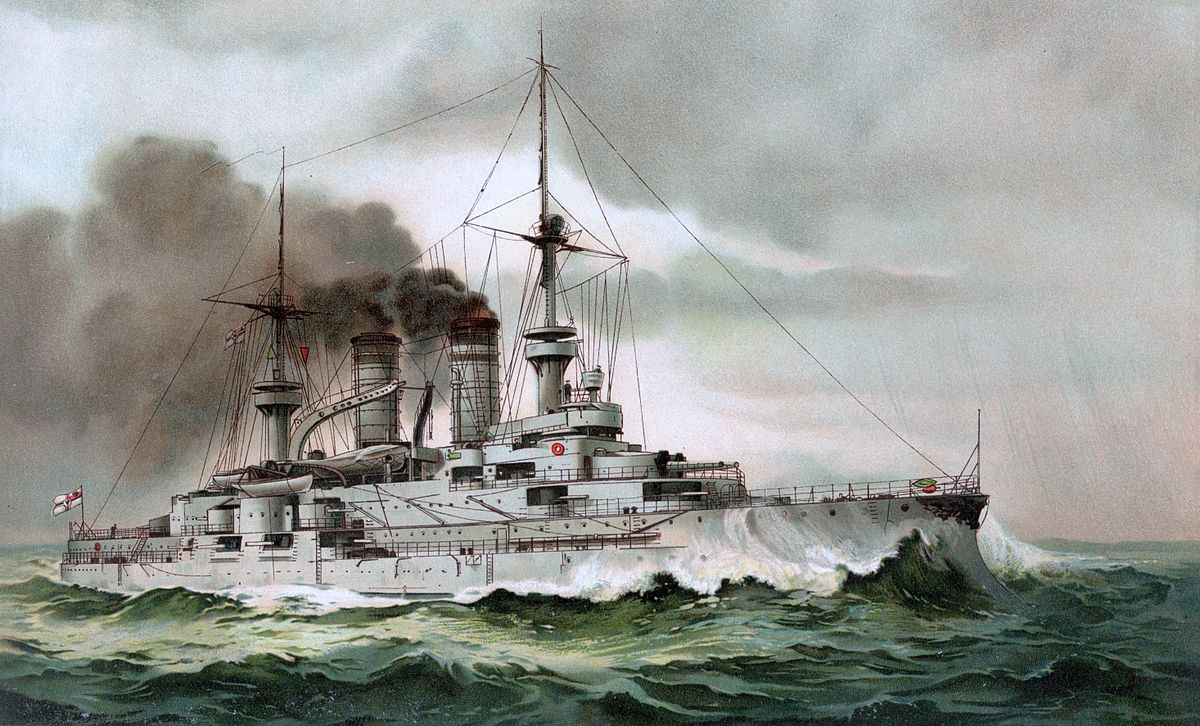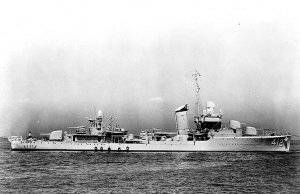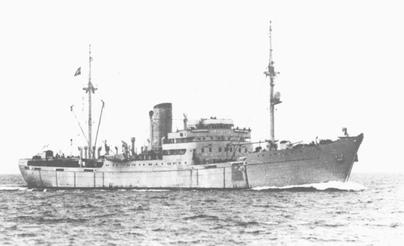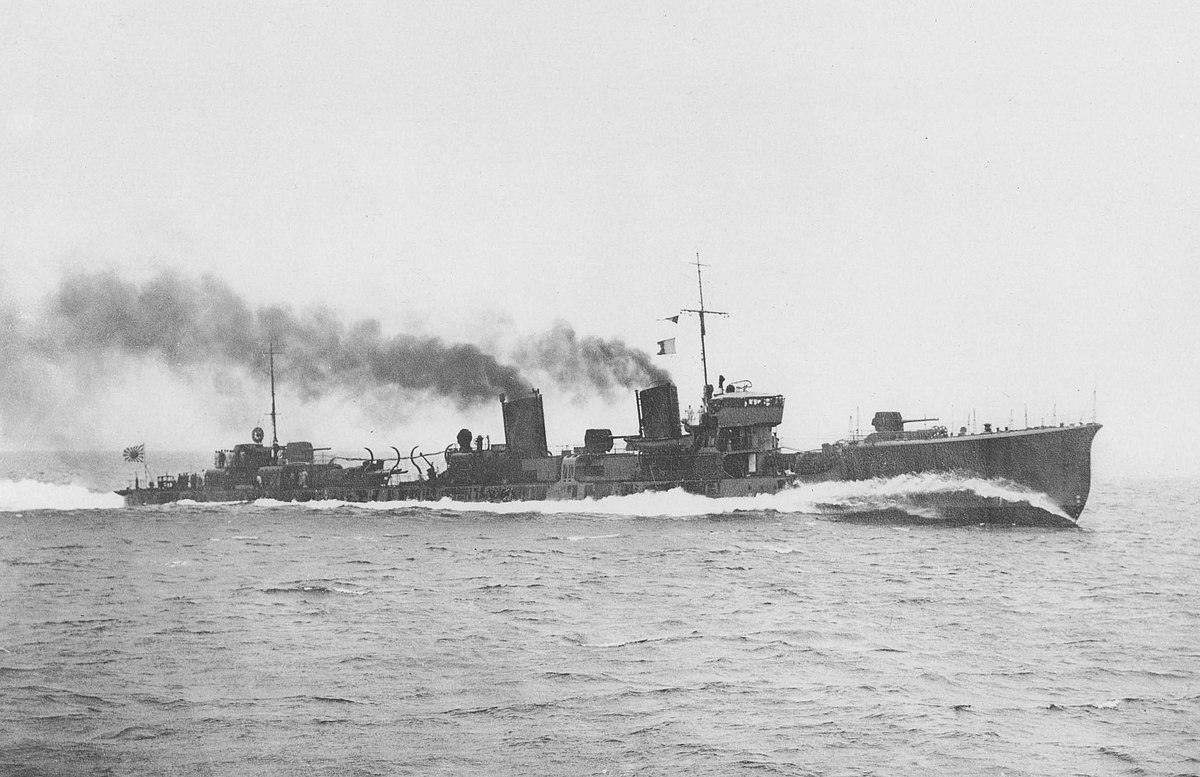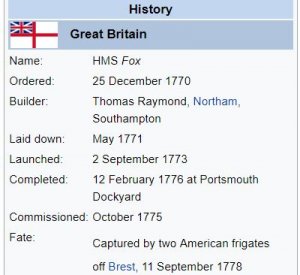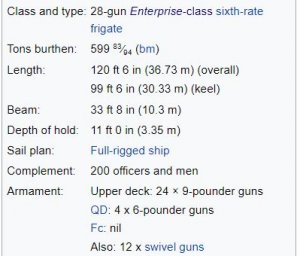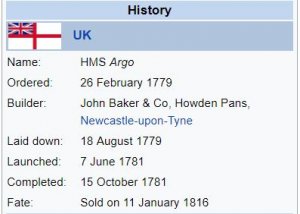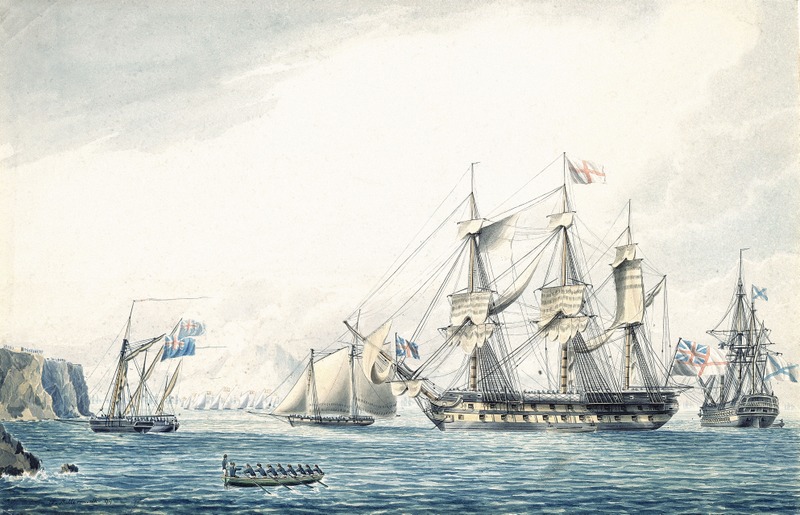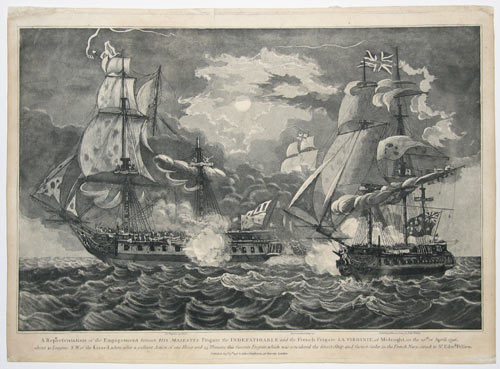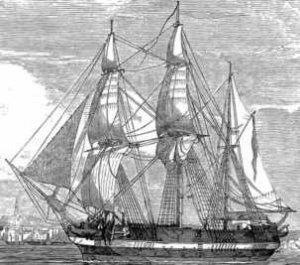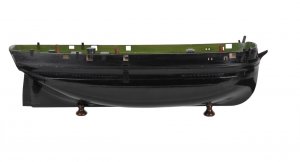Today in Naval History - Naval / Maritime Events in History
6 June 1755 - Action of 6/8 June 1755, 6th June 1755 - 8th June 1755
At Threedecks:
On the 6th June, 1755, near the entrance to the Gulf of St. Lawrence, [Boscawen's British squadron happened] to fall in with four sail of the line, which had parted from M. de la Motte in a gale of wind, he chased them for two days. On the 8th at noon, the Dunkirk, Captain the Hon. Richard Howe, having arrived up with the sternmost French ship, the Alcide, 64, it may be said declared war; for, after some little preliminary hailing, he opened so furious a cannonade, that on the approach of the Torbay, the French ship struck her colours.
A second ship—the Lys, 64—en-flute, was also captured; but a fog shortly afterwards came on, and the third escaped. Thus was this war, commonly called in history "The Seven Years' War" commenced.


at wikipedia:
The Action of 8 June 1755 (from 6th to 8th) was a naval battle between France and Great Britain early in the French and Indian War. The British captured the third-rateFrench ships Alcide and Lys off Cape Race, Newfoundland in the Gulf of St. Lawrence. The battle contributed to the eventual war declarations that in 1756 formally began the Seven Years' War.

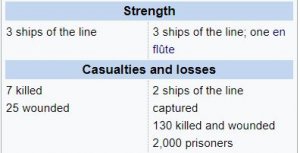
Background
Main article: French and Indian War

Vice Admiral Edward Boscawen was dispatched with eleven ships of the line to intercept French ships heading for Quebec City.
In 1754, French and British colonial forces clashed in 1754, first in the Battle of Jumonville Glen, and then in the Battle of Fort Necessity, over control of the upper Ohio River valley, near present-day Pittsburgh, Pennsylvania. When word of these conflicts reached London, government leaders decided to send regular army troops to occupy the site on which the French had constructed Fort Duquesne. Word of the British military planning leaked to France, where convoys of troops were also rushed into readiness for service in North America. The Royal Navy, aware of the French plans, dispatched Vice Admiral Edward Boscawen and a fleet of eleven ships of the line to the Gulf of St. Lawrence to intercept French shipping headed for Quebec City. Boscawen patrolled along the southern shore of Newfoundland. Three weeks later, a second fleet of seven ships was despatched under Admiral Holbourne to intercept French shipping.
The French fleet, under the command of Admiral Dubois de la Motte, for the most part managed to avoid these British forces. Many of its ships landed at Louisbourg, and some successfully eluded Boscawen's fleet to reach Quebec. However, three ships became separated from the rest of the fleet in fog, and encountered some of Boscawen's ships.
Battle
HMS Dunkirk, HMS Defiance and HMS Torbay encountered the Dauphin Royal, Alcide, and Lys under the command of Toussaint Hocquart. The Lys was sailing en flûte, and had been reduced to 22 cannons because it was carrying soldiers of the Régiment de la Reine and the Régiment de Languedoc; eight companies in all. The Alcide had 64 guns and these ships soon fell in with the British ships. Hocquart of the Alcide called out to the commander of the Dunkirk Richard Howe, "Are we at war, or at peace?" to which the English replied, "At peace, at peace." After a brief discussion, the Royal Navy ships opened fire on the three French ships. The Alcide being better armed than the other two French ships, returned fire and fought bravely for five hours. However, after sustaining much damage it surrendered along with the Lys. The Dauphin Royal escaped in the fog to tell the tale.
Aftermath
After this action and further harassment of French shipping by British naval forces, the two countries declared war on each other in the spring of 1756. The prisoners of this battle, most of them French land troops intended for service in New France, were held at Georges Island in Halifax Harbour and were treated as prisoners of war.
On board the ships Alcide and Lys were found to contain 10,000 scalping knives for Acadians and Indians under Mik Mak Chief Cope and Acadian Beausoleil as they continued to fight Father Le Loutre's War.
Hocquart became Boscawen's prisoner for the third time; he had been captured by him in a frigate action back in 1744. He was then captured again in the First Battle of Cape Finisterre (1747) before finally being captured in the Alcide.
Alcide was a 64-gun ship of the line of the French Navy, launched in 1742. The captain of the vessel was Toussaint Hocquart, for the re-enforcement campaign that was sent to Canada in May 1755.


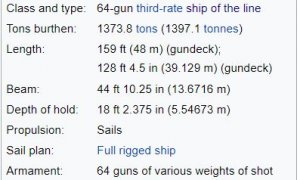

Capture of Alcide near Louisbourg
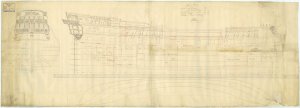

Scale: 1:48. Plan showing the body plan with stern board decoration and name in a cartouche, sheer lines with inboard detail (figurehead missing), and longitudinal half-breadth for' Alcide' (1755), a captured French Third Rate, prior to being fitted as a 64-gun Third Rate two-decker at Portsmouth Dockyard. 'Alcide' was docked at Portsmouth between 20 February and 7 March to be surveyed per Admiralty Order dated 20 December 1756. She was later fitted at Portsmouth between April and July 1757. Signed by Edward Allin [Master Shipwright, Portsmouth Dockyard, 1755-1762]. Reverse: Scale: 1:96. Plan showing the roundhouse, quarterdeck and forecastle, upper deck gun deck (lower deck), orlop deck, and fore and aft platforms for 'Alcide' (1755)
On 8 June 1755, Alcide was captured by HMS Dunkirk and HMS Torbay of Vice-Admiral Edward Boscawen's squadron, and commissioned into the Royal Navy in 1757 as the third-rate HMS Alcide.
HMS Alcide was sold out of the navy in May 1772. However, it perhaps remained in service in some form because on 10 July 1772 according to the UK, Register of Duties Paid for Apprentices' Indentures, 1710–1811, Robert Mellefent was apprenticed as a carpenter to Ebenezer Holland to serve on the ship.
Mars class. Designed and built by Blaise Ollivier.
Lys 64 (launched 10 September 1746 at Brest) – captured by the British off North America in June 1755
Lys class. Designed and built by Jacques-Luc Coulomb.
HMS Dunkirk was a 60-gun fourth-rate ship of the line of the Royal Navy, built at Woolwich Dockyard to the draught specified by the 1745 Establishmentas amended in 1750, and launched on 22 July 1754.



Scale: 1:48. A plan showing the body plan, sheer lines, and the longitudinal half-breadth for 'Dunkirk' (1754), a 60-gun Fourth Rate two-decker. Signed by Joseph Allin [Surveyor of the Navy, 1749-1755]
Career
HMS Dunkirk was sent to America in 1755, along with several other ships, under Vice-Admiral Edward Boscawen. On 5 June she spotted four French ships which were bound for Canada under the command of Admiral Bois de la Mothe. Dunkirk, HMS Defiance and several other ships gave chase. Dunkirk came alongside the 64-gun Alcide and requested the captain meet with the Vice-Admiral, who was then about three miles away. After the captain of the Alcide refused, the Dunkirk opened fire. Soon afterwards, HMS Edgar came alongside the French at which Alcide struck her colours. The Alcide had been carrying 900 troops and the governor of Louisbourg. The general of those troops was killed and 30,000 pounds sterling captured. In the battle, another French vessel, the Lys was captured by HMS Fougueux.
In 1778, Dunkirk was placed on harbour service under captain John Milligan, who had previously served as second lieutenant aboard Eagle. During Milligan's captaincy, and despite her harbor service status, she was among the vessels credited with the capture on 23 December 1781 of the Dutch ship De Vrow Esther, being in company with Squirrel, Antigua, and Cambridge. Milligan left the ship in 1782,[3] and Dunkirk was sold out of the navy in that same year.

 en.wikipedia.org
en.wikipedia.org
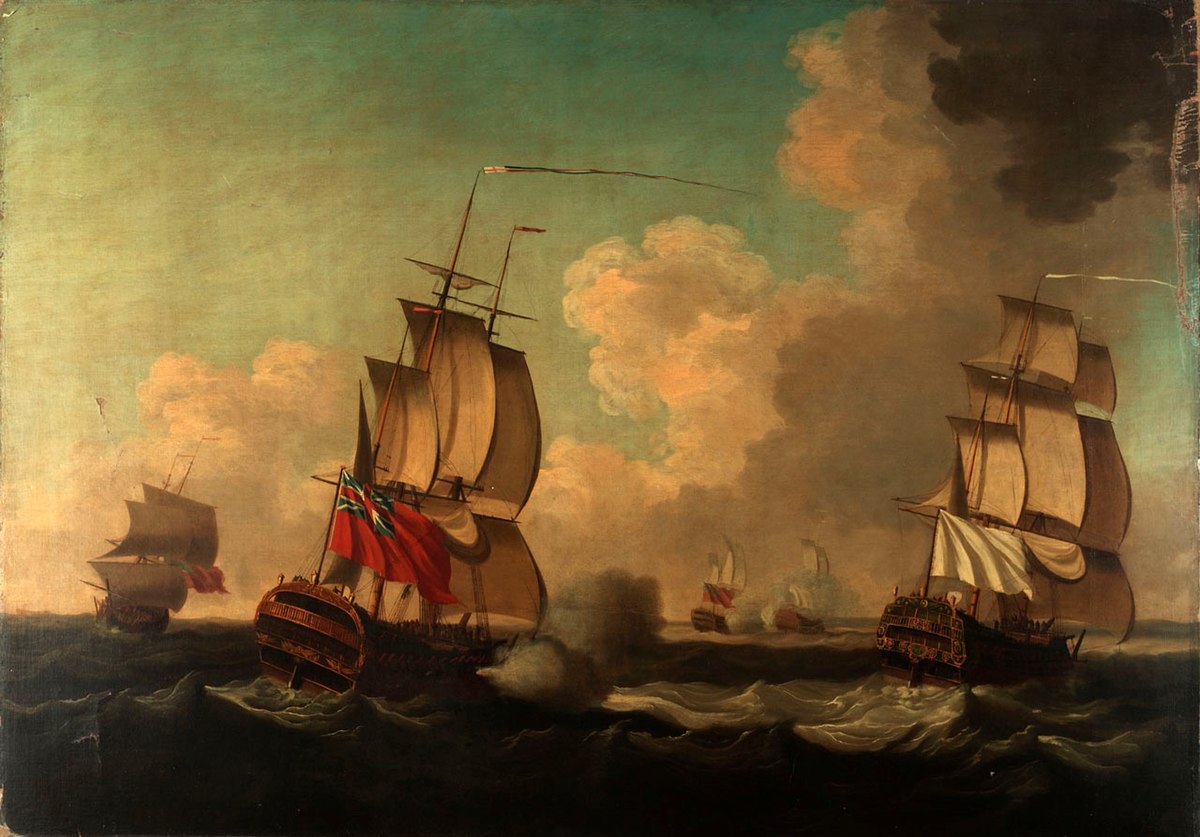
 en.wikipedia.org
en.wikipedia.org

 en.wikipedia.org
en.wikipedia.org

 en.wikipedia.org
en.wikipedia.org
6 June 1755 - Action of 6/8 June 1755, 6th June 1755 - 8th June 1755
At Threedecks:
On the 6th June, 1755, near the entrance to the Gulf of St. Lawrence, [Boscawen's British squadron happened] to fall in with four sail of the line, which had parted from M. de la Motte in a gale of wind, he chased them for two days. On the 8th at noon, the Dunkirk, Captain the Hon. Richard Howe, having arrived up with the sternmost French ship, the Alcide, 64, it may be said declared war; for, after some little preliminary hailing, he opened so furious a cannonade, that on the approach of the Torbay, the French ship struck her colours.
A second ship—the Lys, 64—en-flute, was also captured; but a fog shortly afterwards came on, and the third escaped. Thus was this war, commonly called in history "The Seven Years' War" commenced.


at wikipedia:
The Action of 8 June 1755 (from 6th to 8th) was a naval battle between France and Great Britain early in the French and Indian War. The British captured the third-rateFrench ships Alcide and Lys off Cape Race, Newfoundland in the Gulf of St. Lawrence. The battle contributed to the eventual war declarations that in 1756 formally began the Seven Years' War.


Background
Main article: French and Indian War

Vice Admiral Edward Boscawen was dispatched with eleven ships of the line to intercept French ships heading for Quebec City.
In 1754, French and British colonial forces clashed in 1754, first in the Battle of Jumonville Glen, and then in the Battle of Fort Necessity, over control of the upper Ohio River valley, near present-day Pittsburgh, Pennsylvania. When word of these conflicts reached London, government leaders decided to send regular army troops to occupy the site on which the French had constructed Fort Duquesne. Word of the British military planning leaked to France, where convoys of troops were also rushed into readiness for service in North America. The Royal Navy, aware of the French plans, dispatched Vice Admiral Edward Boscawen and a fleet of eleven ships of the line to the Gulf of St. Lawrence to intercept French shipping headed for Quebec City. Boscawen patrolled along the southern shore of Newfoundland. Three weeks later, a second fleet of seven ships was despatched under Admiral Holbourne to intercept French shipping.
The French fleet, under the command of Admiral Dubois de la Motte, for the most part managed to avoid these British forces. Many of its ships landed at Louisbourg, and some successfully eluded Boscawen's fleet to reach Quebec. However, three ships became separated from the rest of the fleet in fog, and encountered some of Boscawen's ships.
Battle
HMS Dunkirk, HMS Defiance and HMS Torbay encountered the Dauphin Royal, Alcide, and Lys under the command of Toussaint Hocquart. The Lys was sailing en flûte, and had been reduced to 22 cannons because it was carrying soldiers of the Régiment de la Reine and the Régiment de Languedoc; eight companies in all. The Alcide had 64 guns and these ships soon fell in with the British ships. Hocquart of the Alcide called out to the commander of the Dunkirk Richard Howe, "Are we at war, or at peace?" to which the English replied, "At peace, at peace." After a brief discussion, the Royal Navy ships opened fire on the three French ships. The Alcide being better armed than the other two French ships, returned fire and fought bravely for five hours. However, after sustaining much damage it surrendered along with the Lys. The Dauphin Royal escaped in the fog to tell the tale.
Aftermath
After this action and further harassment of French shipping by British naval forces, the two countries declared war on each other in the spring of 1756. The prisoners of this battle, most of them French land troops intended for service in New France, were held at Georges Island in Halifax Harbour and were treated as prisoners of war.
On board the ships Alcide and Lys were found to contain 10,000 scalping knives for Acadians and Indians under Mik Mak Chief Cope and Acadian Beausoleil as they continued to fight Father Le Loutre's War.
Hocquart became Boscawen's prisoner for the third time; he had been captured by him in a frigate action back in 1744. He was then captured again in the First Battle of Cape Finisterre (1747) before finally being captured in the Alcide.
Alcide was a 64-gun ship of the line of the French Navy, launched in 1742. The captain of the vessel was Toussaint Hocquart, for the re-enforcement campaign that was sent to Canada in May 1755.




Capture of Alcide near Louisbourg


Scale: 1:48. Plan showing the body plan with stern board decoration and name in a cartouche, sheer lines with inboard detail (figurehead missing), and longitudinal half-breadth for' Alcide' (1755), a captured French Third Rate, prior to being fitted as a 64-gun Third Rate two-decker at Portsmouth Dockyard. 'Alcide' was docked at Portsmouth between 20 February and 7 March to be surveyed per Admiralty Order dated 20 December 1756. She was later fitted at Portsmouth between April and July 1757. Signed by Edward Allin [Master Shipwright, Portsmouth Dockyard, 1755-1762]. Reverse: Scale: 1:96. Plan showing the roundhouse, quarterdeck and forecastle, upper deck gun deck (lower deck), orlop deck, and fore and aft platforms for 'Alcide' (1755)
On 8 June 1755, Alcide was captured by HMS Dunkirk and HMS Torbay of Vice-Admiral Edward Boscawen's squadron, and commissioned into the Royal Navy in 1757 as the third-rate HMS Alcide.
HMS Alcide was sold out of the navy in May 1772. However, it perhaps remained in service in some form because on 10 July 1772 according to the UK, Register of Duties Paid for Apprentices' Indentures, 1710–1811, Robert Mellefent was apprenticed as a carpenter to Ebenezer Holland to serve on the ship.
Mars class. Designed and built by Blaise Ollivier.
- Mars 64 (launched May 1740 at Brest) – captured by the British off Ireland in October 1746 and added to the RN under the same name, wrecked at Halifax 1755
- Alcide 64 (launched 6 December 1743 at Brest) – captured by the British off North America in June 1755 and added to the RN under the same name, sold 1772
Lys 64 (launched 10 September 1746 at Brest) – captured by the British off North America in June 1755
Lys class. Designed and built by Jacques-Luc Coulomb.
- Lys 64 (launched 10 September 1746 at Brest) – captured by the British off North America in June 1755
- Fougueux 64 (launched March 1747 at Brest) – Captured by the British at the Second Battle of Cape Finisterre in October 1747
- Dragon 64 (launched 16 September 1747 at Brest) - wrecked 1762.
HMS Dunkirk was a 60-gun fourth-rate ship of the line of the Royal Navy, built at Woolwich Dockyard to the draught specified by the 1745 Establishmentas amended in 1750, and launched on 22 July 1754.



Scale: 1:48. A plan showing the body plan, sheer lines, and the longitudinal half-breadth for 'Dunkirk' (1754), a 60-gun Fourth Rate two-decker. Signed by Joseph Allin [Surveyor of the Navy, 1749-1755]
Career
HMS Dunkirk was sent to America in 1755, along with several other ships, under Vice-Admiral Edward Boscawen. On 5 June she spotted four French ships which were bound for Canada under the command of Admiral Bois de la Mothe. Dunkirk, HMS Defiance and several other ships gave chase. Dunkirk came alongside the 64-gun Alcide and requested the captain meet with the Vice-Admiral, who was then about three miles away. After the captain of the Alcide refused, the Dunkirk opened fire. Soon afterwards, HMS Edgar came alongside the French at which Alcide struck her colours. The Alcide had been carrying 900 troops and the governor of Louisbourg. The general of those troops was killed and 30,000 pounds sterling captured. In the battle, another French vessel, the Lys was captured by HMS Fougueux.
In 1778, Dunkirk was placed on harbour service under captain John Milligan, who had previously served as second lieutenant aboard Eagle. During Milligan's captaincy, and despite her harbor service status, she was among the vessels credited with the capture on 23 December 1781 of the Dutch ship De Vrow Esther, being in company with Squirrel, Antigua, and Cambridge. Milligan left the ship in 1782,[3] and Dunkirk was sold out of the navy in that same year.

Action of 8 June 1755 - Wikipedia

French ship Alcide (1743) - Wikipedia

HMS Dunkirk (1754) - Wikipedia

HMS Neptune (1683) - Wikipedia
Action of 6/8 June 1755, 6th June 1755 - 8th June 1755
Description and participants : Action of 6-8 June 1755, 6th June 1755 - 8th June 1755
threedecks.org
Last edited by a moderator:



